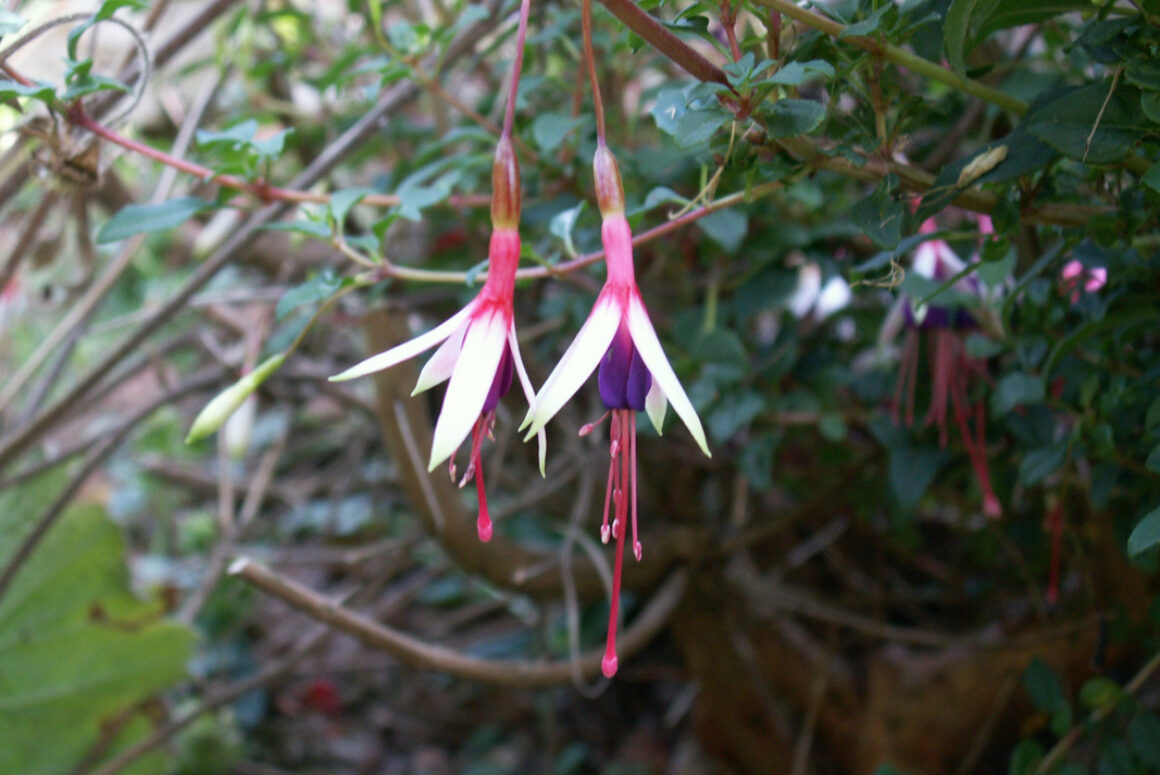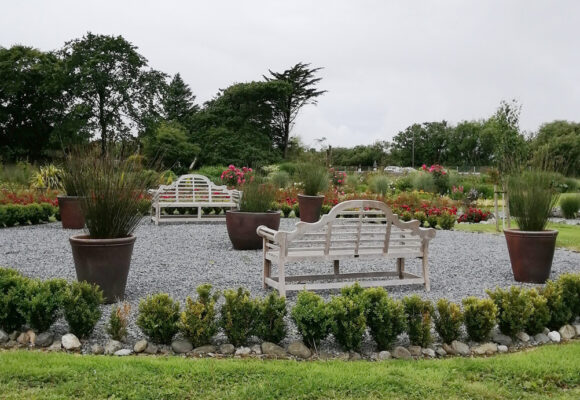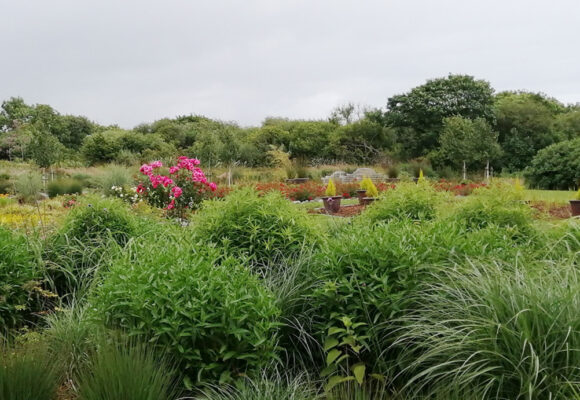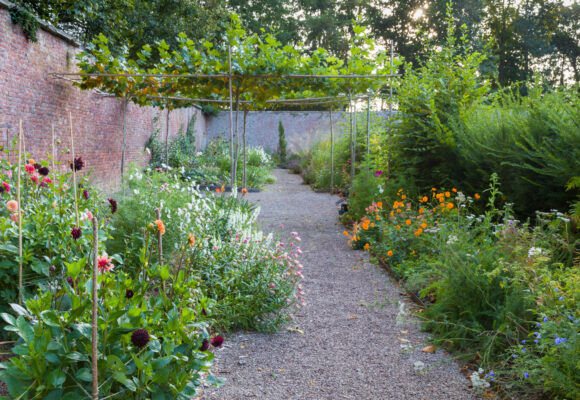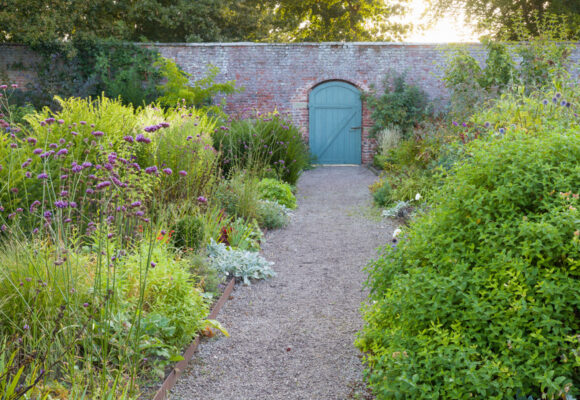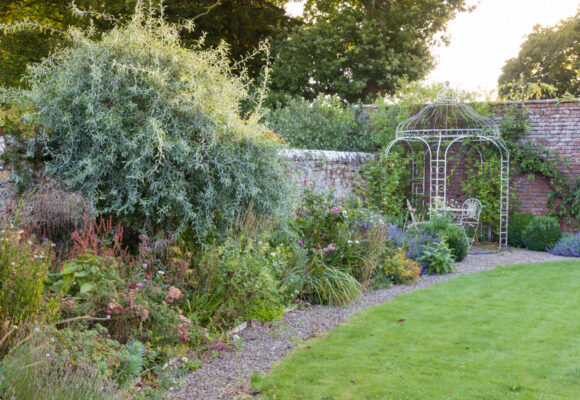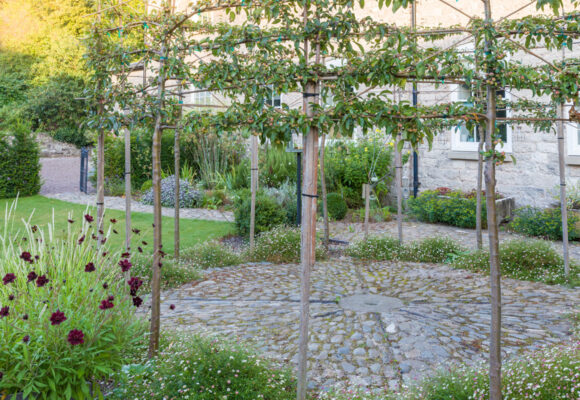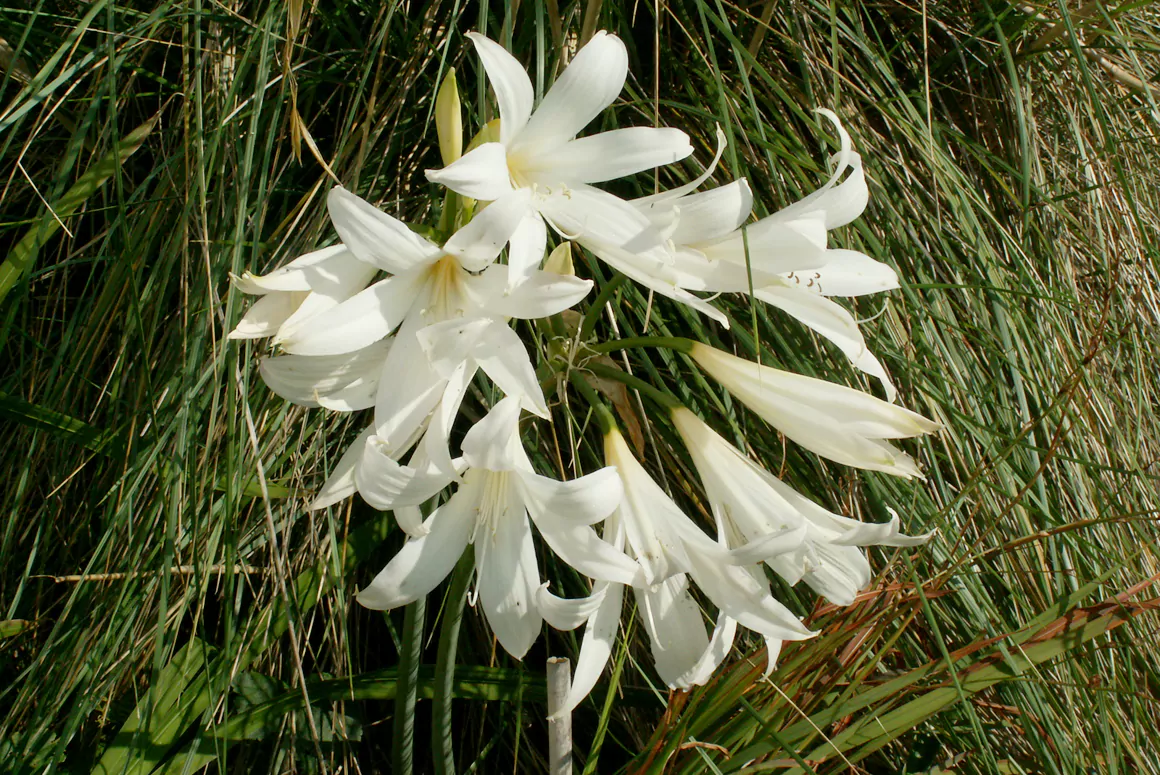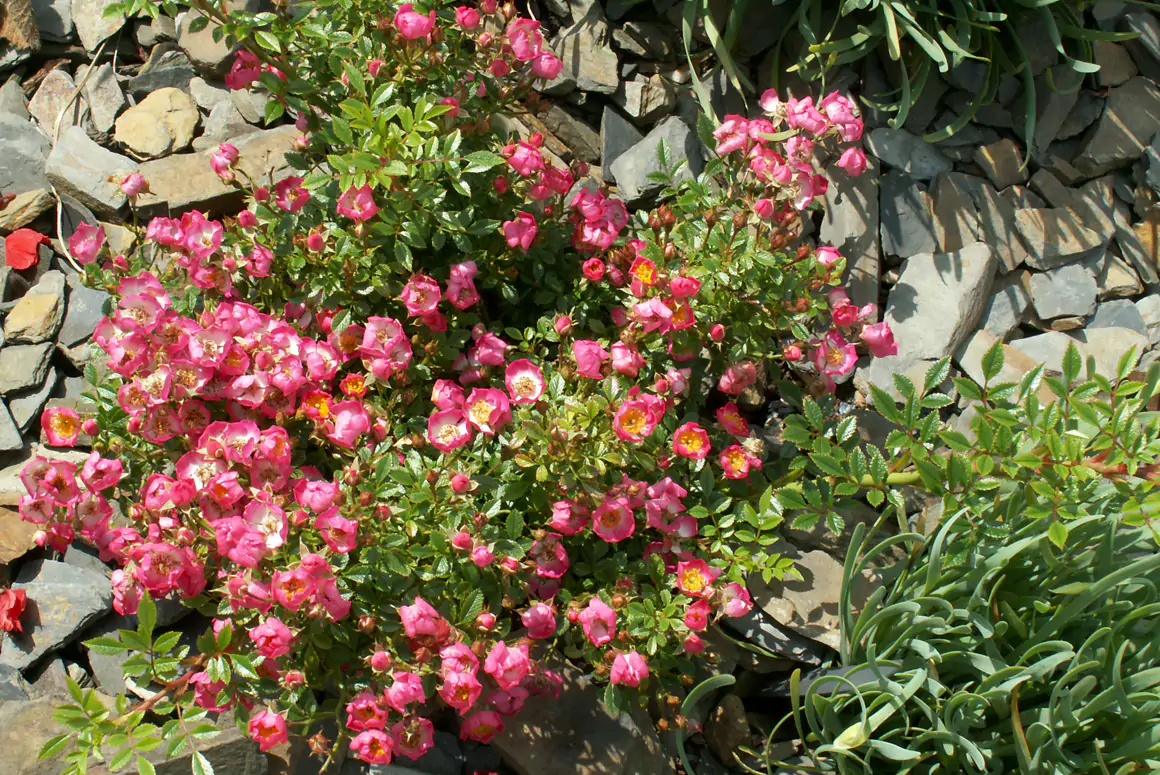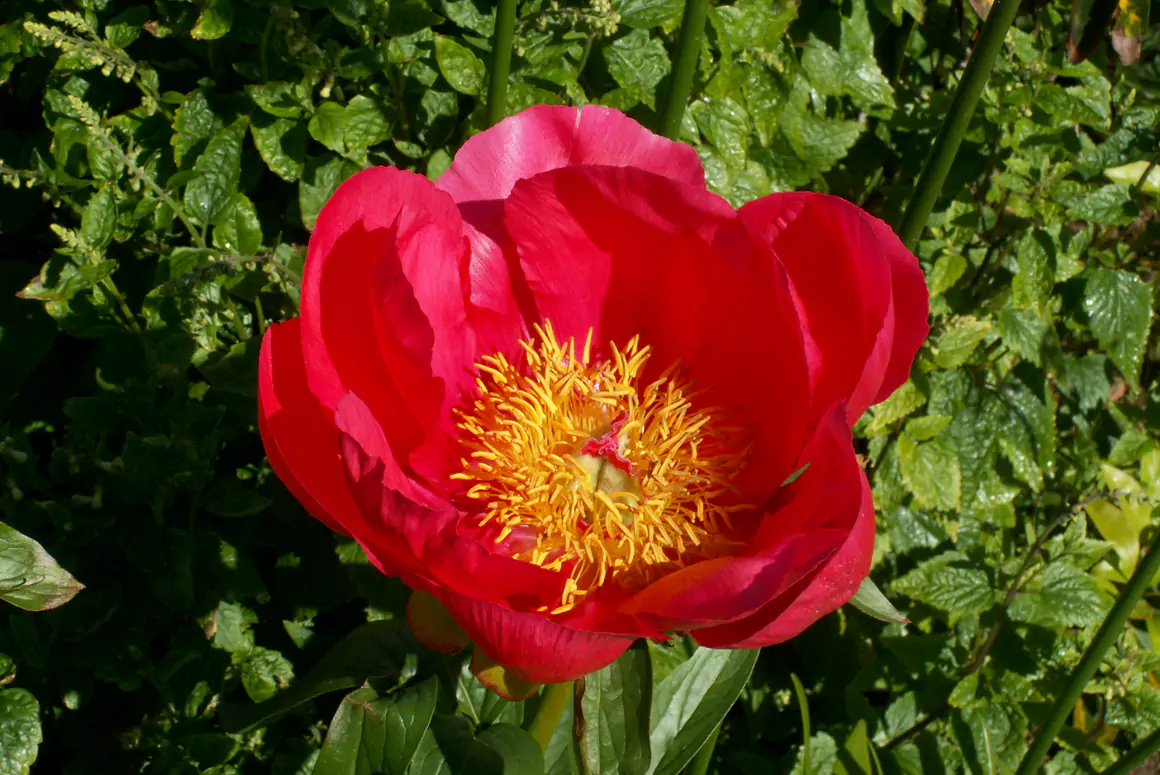![]()
In the other gardens
And all up the vale,
From the autumn bonfires
See the smoke trail!Pleasant summer over,
And all the summer flowers,
The red fire blazes,
The grey smoke towers.Sing a song of seasons!
Something bright in all!
Flowers in the summer,
Fires in the fall!Robert Louis Stevenson (1850-1894)
The great majority of fuchsia species originate from South America, with just a few from New Zealand. Few of them are really hardy except Fuchsia magellanica and this species hybridised with others, has provided a multitude of the most widely used plants in UK gardens. Since, as many of you will know, I have a garden on the mild South Wales coast, I am able to grow a number of species which although sometimes dying back, are reliable enough for me to regard as perennial. For most people they will only succeed on sunny walls or in pots, when they can be overwintered indoors.
Fuchsia boliviana has large drooping clusters of fluorescent red flowers, which eventually produce black edible fruits that were once harvested by the Incas. Relatively tender, if potted and kept indoors will produce flowers and fruit at virtually any time of year.
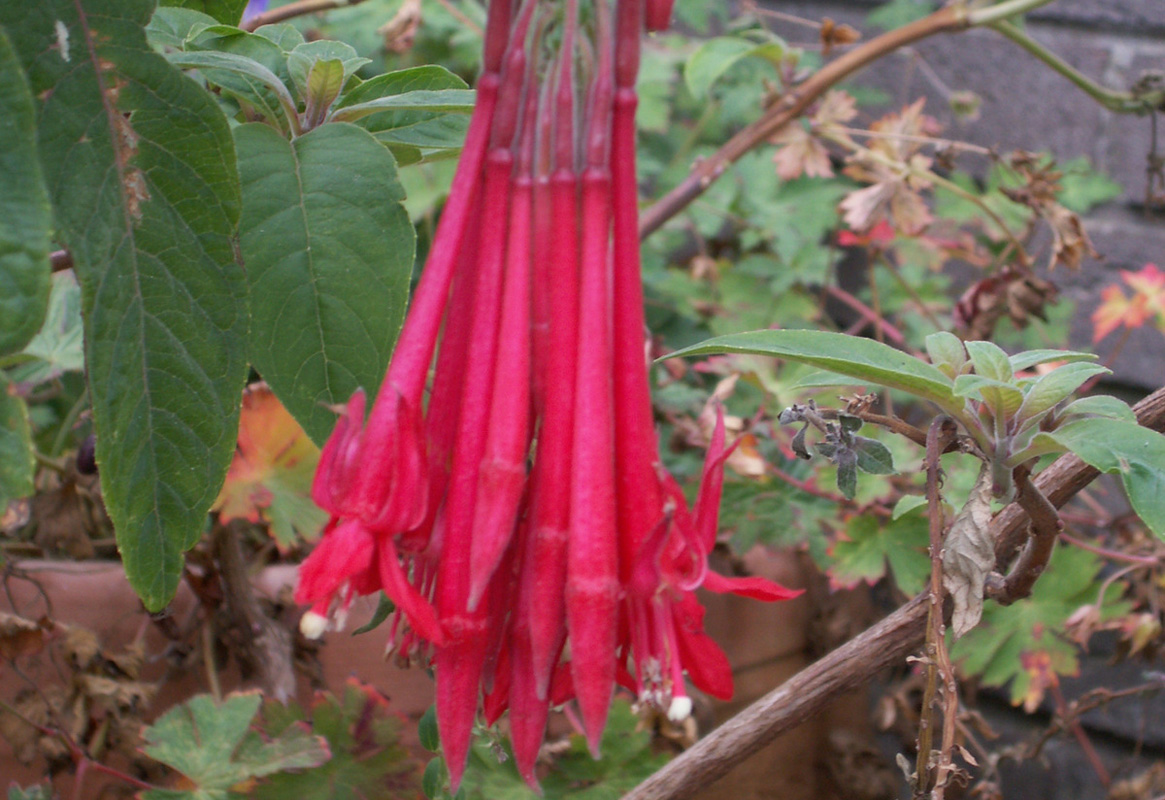
Fuchsia fulgens has reputably the longest flower in the family and with hanging clusters of salmon pink flowers it deserves its Latin name which means ‘bright’. It too, produces edible fruits which are substantially larger than its relative above. I have several plants which all survived “the Beast from the East” although cut to the ground.
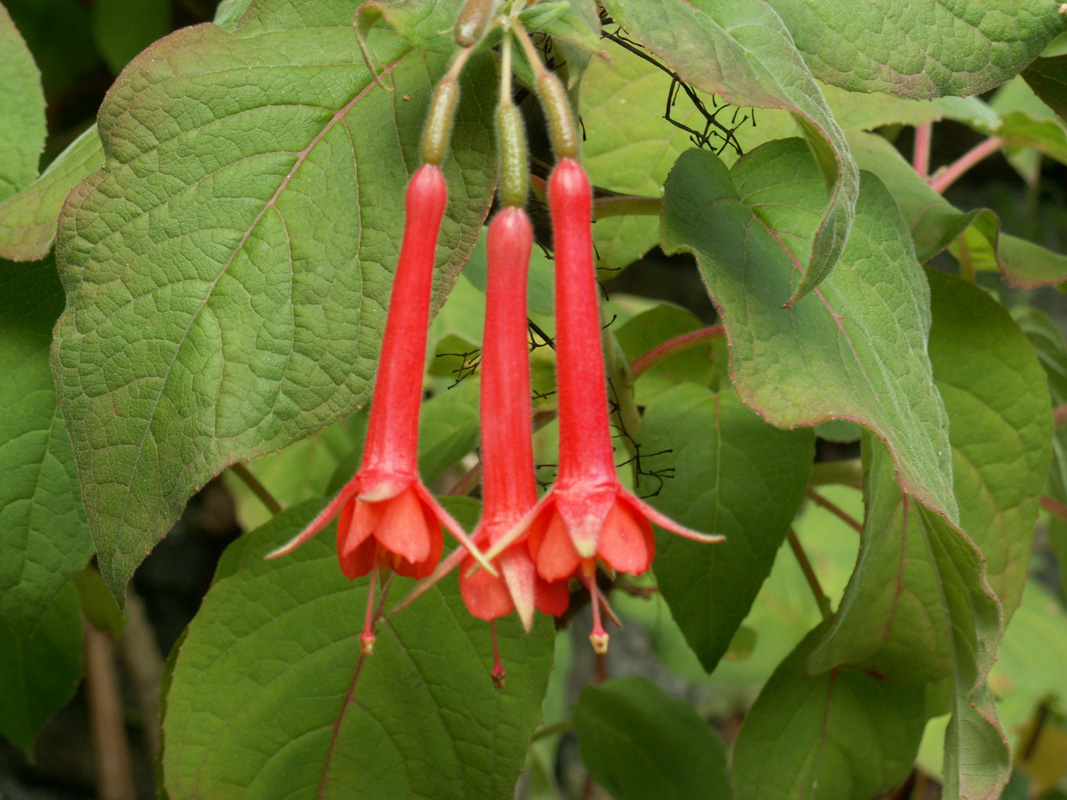
Fuchsia splendens is another stunner, its salmon pink flowers with green sepals and petals, deserving the Latin description ‘brilliant’. A pinched waist gives it a resemblance to a chilli pepper and it is sometimes called the ’Chilli Pepper Fuchsia’. The fruits however, are long and slender and reputed to have a delightful light lemony flavour.
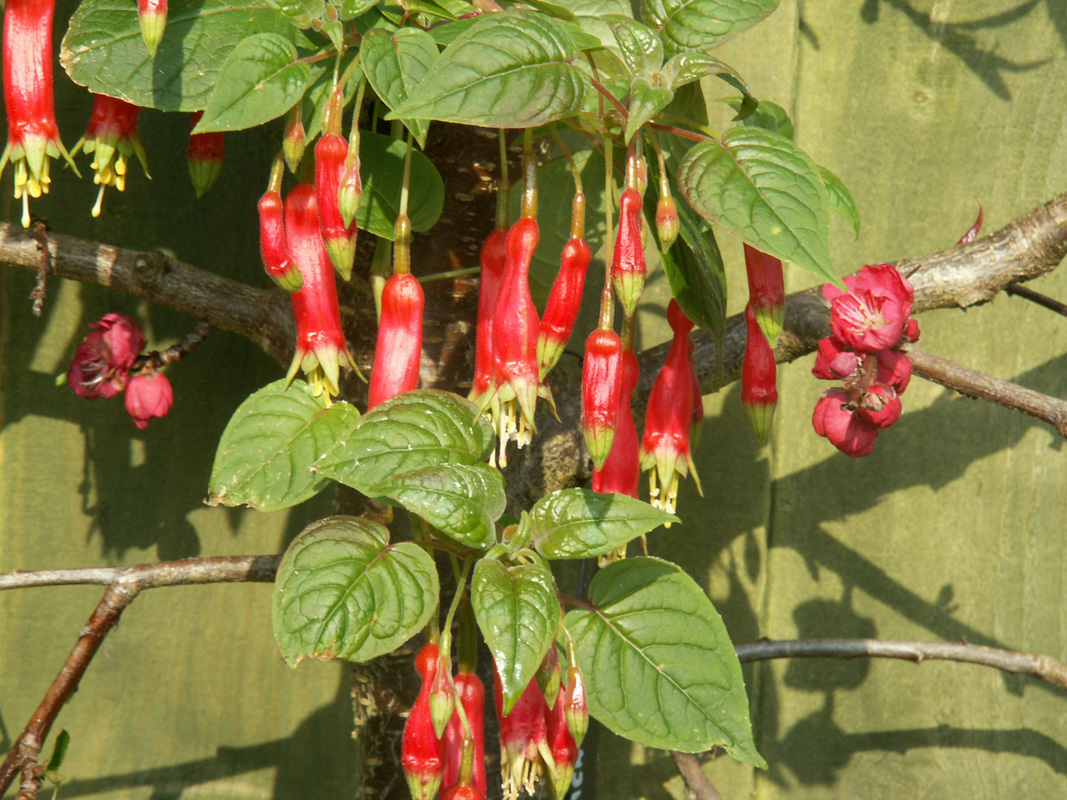
For those of you who do not have the luxury of a benign climate, I can recommend Fuchsia magellanica ’Arauco’ which appears to be reliably hardy except in the most extreme situations. Believed to be a naturally occurring form of the species, it has small flowers of pink, white and purple in profusion. Less amenable to pot cultivation than most, it requires a moist cool position to perform at its best.
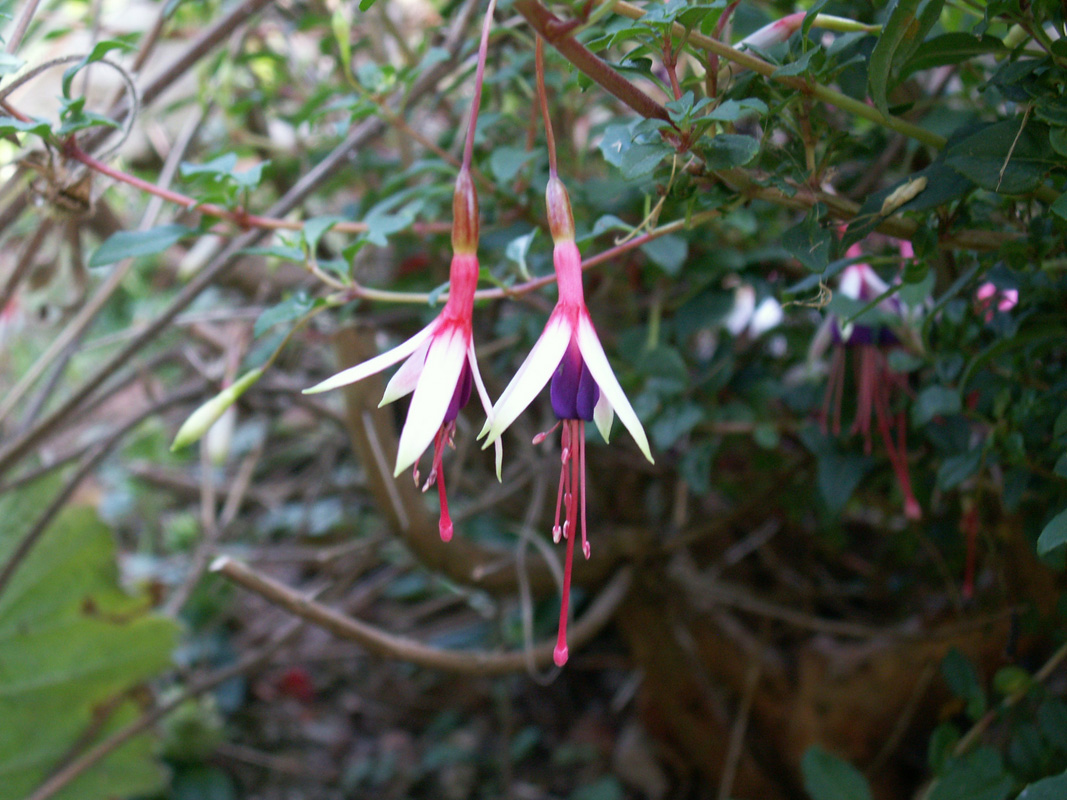
All the aforementioned species are easily raised from short, softwood, tip cuttings taken during summer or early autumn and overwintered frost free. Winter survival in the ground is improved by adding copious amounts of compost below the plant at planting time. Lastly, commonly pronounced “fewsha” they should properly be called “fookshia” as their discoverer Father Plumier named it after Leonard Fuchs, a German botanist.
One might imagine that gardens open under the National Garden Scheme become few and far between as autumn arrives, however, those that do are often tailored for that season, and reward a visit during what can be an enchanting time of year.
In the mild west at Manorbier, The Grange is a 5 acre garden of 2 parts. The older established garden was developed around the Grade 11 listed house (not open) and has colourful herbaceous borders, rose gardens and an outdoor chess set. A newer garden has been created from a boggy field which now consists of a lake, ponds and a dry river bed. At its best in autumn is an area developed as a ‘Prairie’ garden with many different grasses. Largely planted this year, the owners are eagerly anticipating its future maturity, with wildlife already moving in.
The Grange
Open the same weekend in Pembrokeshire is Lamphey Walled Garden, a plantsperson’s garden with over 40 salvia species. Why not visit both?
Lamphey Walled Garden
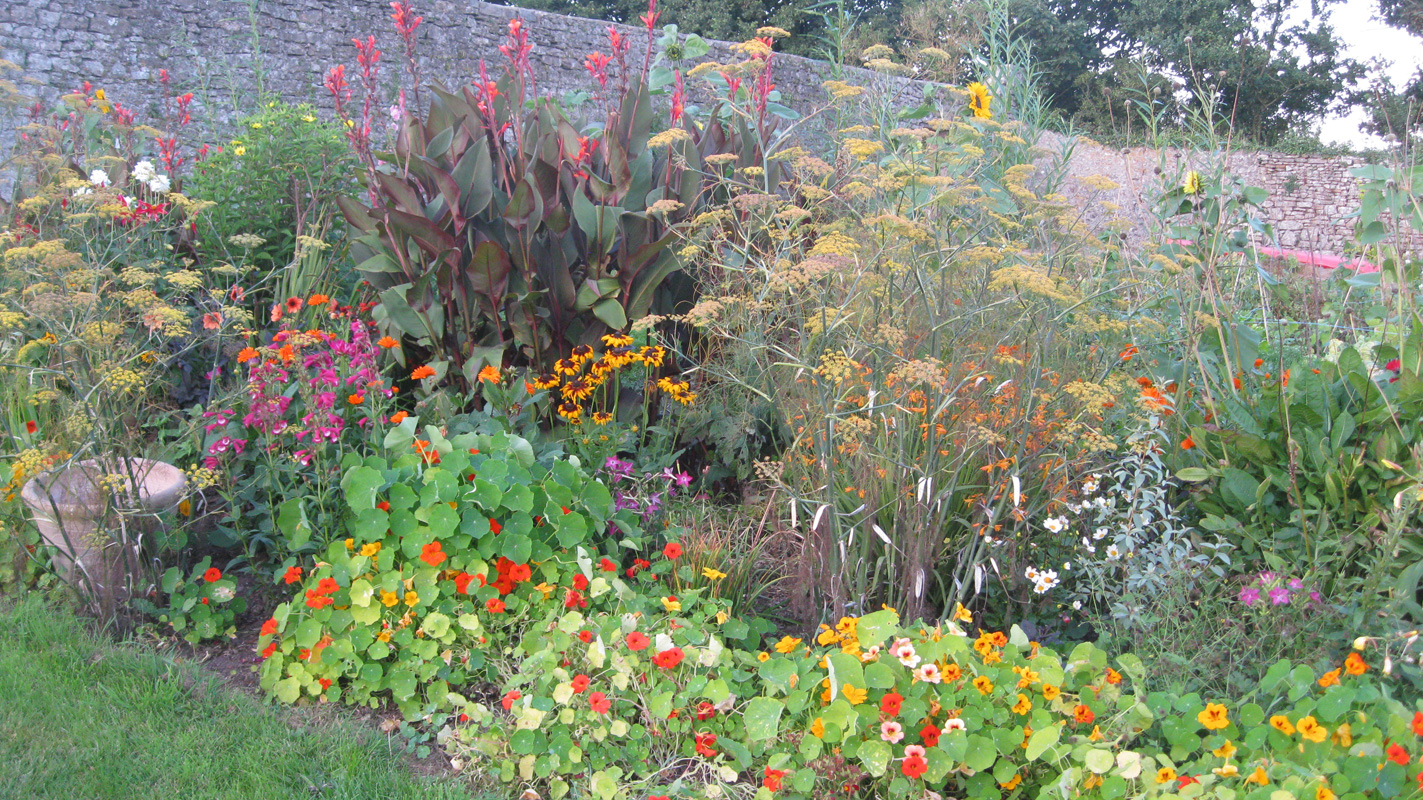
Treborth Botanic Garden was established more than 50 years ago at Bangor University and provides teaching and research facilities as well as public education and enjoyment. Within its 18 hectares on the rocky shores of the Menai Straits, it comprises planted borders, species rich natural grassland, ponds, arboretum, Chinese garden and ancient woodlands. There are six glasshouses containing varying growing conditions for special plant collections. As well as more than 3,000 native and exotic species, the garden also has an active programme of conservation and propagation of native Welsh species. Plant lovers can treat themselves in the sale of many interesting plants!
Treborth Botanic Garden
A visit to The Laundry in Denbigh is a chance to catch a garden in its formative stages. Work started in 2009 to create a cottage style garden in the vicinity of the converted Georgian house. Use has been made of the existing wall layout to form ‘rooms’ incorporating a small pleached lime avenue, herbaceous borders, a large terrace and lawns. Close by is the 250 year old walled kitchen garden, which is in the early stages of a complete overhaul, to provide future new and exciting features. A west border is now fully planted with a formal central terrace dividing it. Enjoy the 2 acre woodland walk and the recently planted woodland garden.
The Laundry
Photos © Joe Wainwright
Before autumn closes in there is still time to host your own Great British Garden Party to raise monies for some of the UK’s best loved nursing and health charities: ngs.org.uk/gardenparty. Everyone can contribute!
NGS Open Gardens
Welsh Country has two NGS open garden sections. The first ‘Open Gardens’ are gardens that are open on specific days and the ‘Long Term Open Gardens’ which are by appointment only. There is a search facility on each page so simply search for a garden name or an area of Wales (i.e. Swansea) you’d like to visit.


